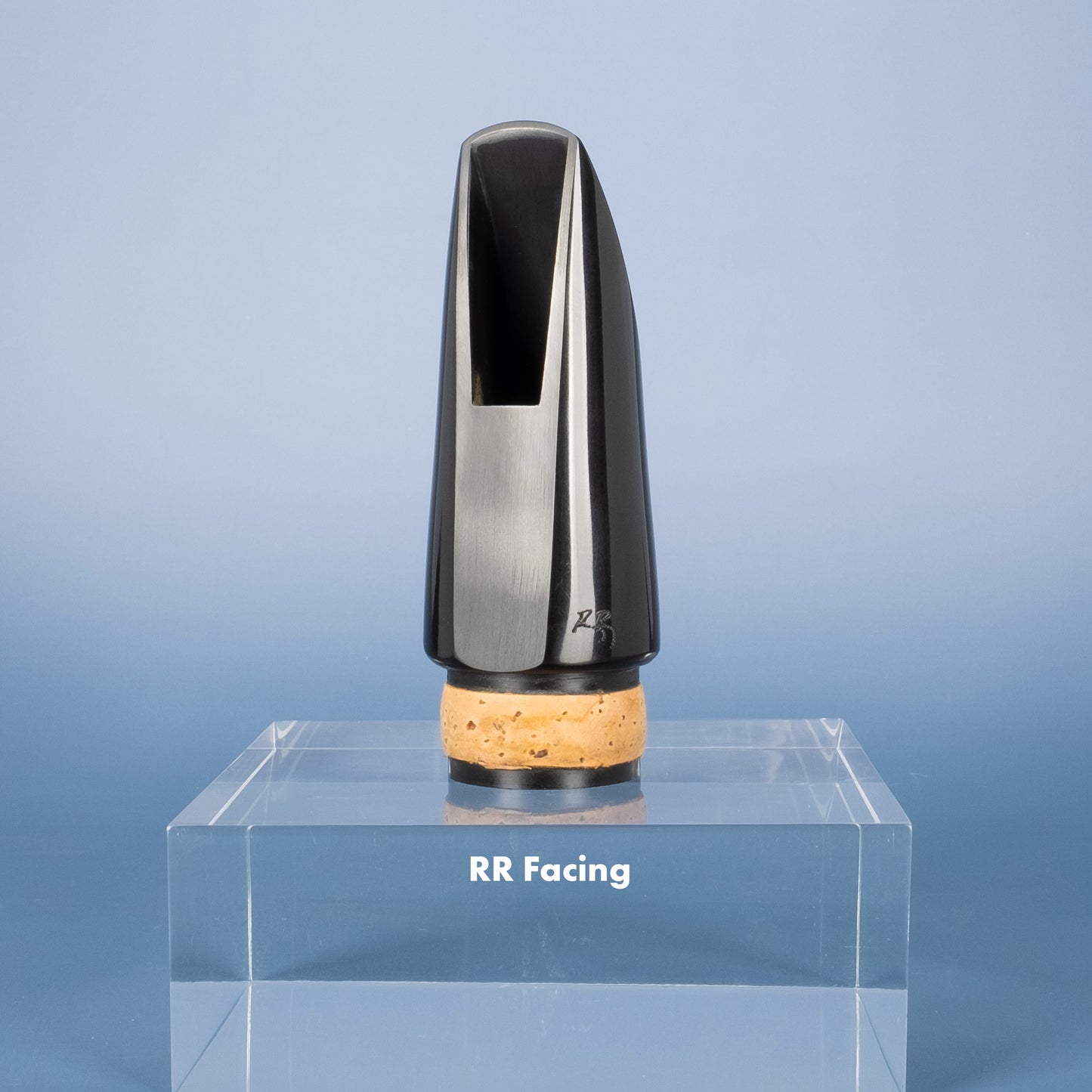Clark Fobes Bass Clarinet Mouthpieces
Clark Fobes Bass Clarinet Mouthpieces
I had been hearing about Clark's bass clarinet mouthpieces for years — from friends like Jeff Anderle, who works with Clark, and from dozens of players emailing me, or coming into the shop raving about theirs. I had to find out what all the fuss was about.
So I wrote Clark and he sent me one of each of his facings, and I tried them. "Pretty damn impressive," I thought. So for all of you who've been wondering about the Fobes, here is my take on each of them, which reeds to pair (or at least as a starting point), and how they compare with a mouthpiece you might already be familiar with — you know, just to get you in the ballpark for what you'd like to try.
60-second introduction to mouthpiece terminology
Some things to know: all of Fobes' professional mouthpieces are made from the same blank (a "blank" is a mouthpiece without the facing put on it or voicing done to it — more on that below.)
Blanks are created a couple of different ways: 1) it's molded — the rubber is vulcanized, heated, and placed into a mold), or 2) milled from a solid piece of rod rubber. There are pluses and minuses to each method, but in general molded mouthpieces are less expensive, and don't last as long. Vandoren, D'Addario and other "mass-market" mouthpiece manufacturers generally use molds (an exception is Backun, who uses rod rubber). Custom, professional mouthpiece makers generally use rod rubber, including Clark Fobes, at least for his "10k, San Francisco" models. His less-expensive models are molded.
A facing is how the flat part that the reed sits on curves away from the reed. This has an effect on how hard your reed should be, and of course, how it feels to play.) Fobes also does work on the voicing of each different mouthpiece model, which involves removing material from certain parts of the inside of the mouthpiece.
Model and facing descriptions
Now I'll give you a brief description of each model, starting with the most conservative, and moving on to the more, um, uninhibited ones.
10k San Francisco: the Professional Models
The CF facing is the most close facing Clark offers. The CF is probably most similar to a Vandoren B40, though it has a bit more of a close facing. It is an excellent mouthpiece for people who are learning the instrument, but who want a mouthpiece made from a higher-end milled blank. I recommend pairing this with a Vandoren Traditional #3 or Vandoren V12 #3 bass clarinet reed.
The RR facing (RR = Ron Reuben, Bass Clarinetist with the Philadelphia Orchestra from 1967-2015) is about 0.1mm larger at the tip opening. It totally reminds me of my Selmer C* that was refaced by Everett Matson back in the 90s. No surprise there, since Ron Reuben's preferred mouthpiece was a Selmer C* refaced by Matson. This is, in my opinion, one of the more ideal orchestral mouthpieces on the market, and pairs well with a Vandoren Traditional #3...but one on the softer side.
The AP facing is good for more "soloistic" stuff, and for jazz. It has a larger tip opening and a longer facing (i.e., the mouthpiece curves away from the reed closer to the "butt" of the reed than the tip). I especially liked the low-mid range (500-1000Hz), then there was a bit of a attenuation in the midrange and then an airy top (9kHz+). This makes the AP nice and bright and gutsy. The other thing I liked about this facing was how well it would go down-register (from clarion down the 12th to the chalumeau) — something that is a challenge with most mouthpieces. I personally liked this one a lot, it's similar to my Vandoren B50, and I'd recommend pairing it with a Vandoren V12 #2.5 reed.
The HB is H.U.G.E. It feels like the volume ceiling on that mouthpiece doesn’t exist—that or I didn’t find it yet, which is saying something! It's definitely a jazz mouthpiece, and it's loud, bright and deep. And while it's probably one of the harder mouthpieces to control, it might be worth the effort especially for those playing in amplified situations. It's got a long facing like the AP, with a larger tip opening. If Vandoren made this, it'd be called a B52. I'd use a Vandoren Traditional #2.5 with this mouthpiece.
Intermediate and Student models
The NOVA is a JJ Babbit molded rubber blank, and comes with either a CF or RR facing. Basically it's the same as the pro models above, but since it's molded rubber, it's less expensive.
The Debut is a terrific mouthpiece under $100. Probably one of the only two I can recommend (the other is the Backun Protege). It's the CF facing, one a molded acrylic blank.
Trials
I offer one week trials on Fobes mouthpieces. Returns from trials come with a 3% credit card processing fee, and you'll need to cover two-way shipping (about $10-14 depending on where you live). Important: please have a look at my Trial Policy for details on Accessories trials.
No se pudo cargar la disponibilidad de retiro
I’m absolutely loving this mouthpiece! I’ve tried out a bunch of vandoren mouthpieces on bass a while ago and they never worked the way I liked them as they did on soprano. I tried out a nova and loved it but it just recently died. Decided to try a better fobes mouthpiece and it immediately improved my tone and ease of playing. I thought it was good before but I absolutely love this new mouthpiece!
LOVE this! I have the HB facing (their most open facing) and previously had a Nova CF- I think I'll be buried next to my Clark Fobes mouthpieces for sure.




























